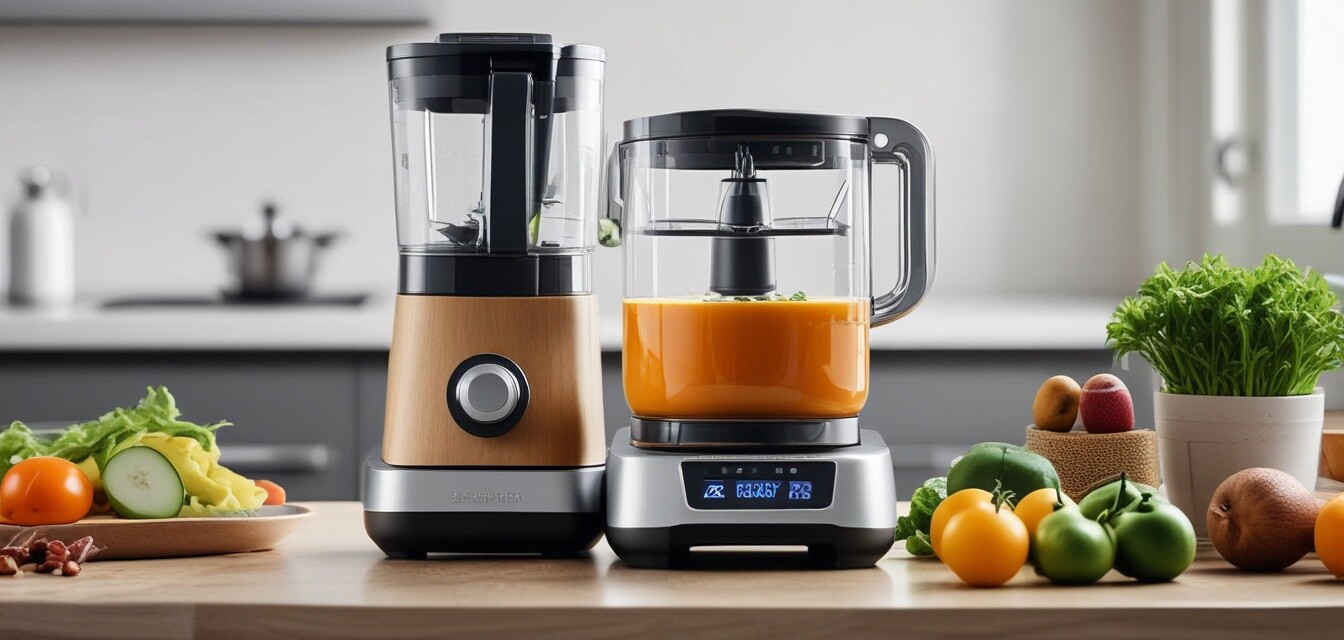
The Evolution of Smart Food Processors
Key Takeaways
- Smart food processors integrate advanced technology for efficiency and convenience.
- They feature capabilities like smart controls, specialized attachments, and connectivity.
- Modern designs enhance both functionality and kitchen aesthetics.
- Benefits include versatility, time-saving automation, and improved ingredient management.
In today's fast-paced world, smart appliances are quickly transforming the way we cook and prepare food. Among these, smart food processors stand out as essential tools that not only simplify cooking tasks but also enhance our culinary experiences. In this article, we will explore the evolution of smart food processors, their features, and how they are revolutionizing kitchen efficiency.
What is a smart food processor?
A smart food processor is an advanced kitchen appliance that utilizes technology to facilitate food preparation. These devices offer features such as connectivity, automated settings, and versatility in food processing tasks. Unlike traditional food processors, smart models can often be controlled via smartphone apps and may incorporate smart technology like sensors and voice control.
Key features of modern smart food processors
Smart food processors come with a range of impressive features that cater to the needs of a modern kitchen. Here are some of the core functionalities you can expect:
| Feature | Description |
|---|---|
| Smart controls | Touchscreen interfaces and app connectivity allow for easy operation and custom settings. |
| Cooking programs | Pre-programmed settings make it easier to prepare specific dishes with the right settings. |
| Recipe integration | Access to online recipes and cooking tutorials via app connectivity. |
| Automated ingredient measurement | Integrated scales ensure accurate measurements for recipes. |
| Multifunctionality | Chop, blend, puree, and even cook with specialized attachments. |
| Self-cleaning modes | Automated cleaning cycles make maintenance easier than ever. |
The importance of connectivity
Many smart food processors can connect to home networks, enabling a range of features that enhance their usability. This connectivity means they can integrate with other smart devices and appliances. For instance, you might use your smart oven or smart ovens for synchronized cooking, ensuring your meal is perfectly timed and seamlessly prepared.
Enhanced user experience with apps
The proliferation of companion apps has significantly enriched the user experience. These apps often provide:
- Access to a library of thousands of recipes
- Step-by-step cooking guides that adapt to your preferences
- Nutrition tracking features to monitor ingredient intake
Design trends in smart food processors
The design of smart food processors has evolved from bulky, utilitarian models to sleek, modern appliances that blend seamlessly into contemporary kitchens. Attention to aesthetics has become a priority for manufacturers, making these appliances not just tools but style statements.
Beginner's section: What to look for in a smart food processor
- Capacity: Choose a size that fits your cooking habits.
- Attachments: Look for versatile attachments for different food processing tasks.
- Smart features: Prioritize models with connectivity and automated settings.
- Ease of cleaning: Consider self-cleaning features or dishwasher-safety ratings.
Future trends in the smart kitchen
As technology continues to advance, we can expect to see even more innovative features in smart food processors. Future trends may include:
- Increased AI integration: More intelligent systems that learn your cooking habits and preferences.
- Greater energy efficiency: Environmentally friendly designs to minimize energy consumption.
- More seamless integration: Enhanced compatibility with other smart appliances, including Bluetooth-enabled appliances.
Conclusion
Smart food processors represent just one aspect of how technology is reshaping our kitchens. These appliances not only save time and effort, but they also encourage creativity in meal preparation. With advancements continually making their way into the market, investing in a smart food processor might just be one of the best decisions you can make for your kitchen. Stay ahead of the curve by exploring the latest trends and innovations in kitchen technology.
Pros
- User-friendly interfaces
- Time and effort saved in cooking
- Access to a variety of recipes and cooking methods
- Consistent results with automated settings
Cons
- Can be expensive compared to traditional models
- Learning curve for some features
- Dependent on technology, which can malfunction